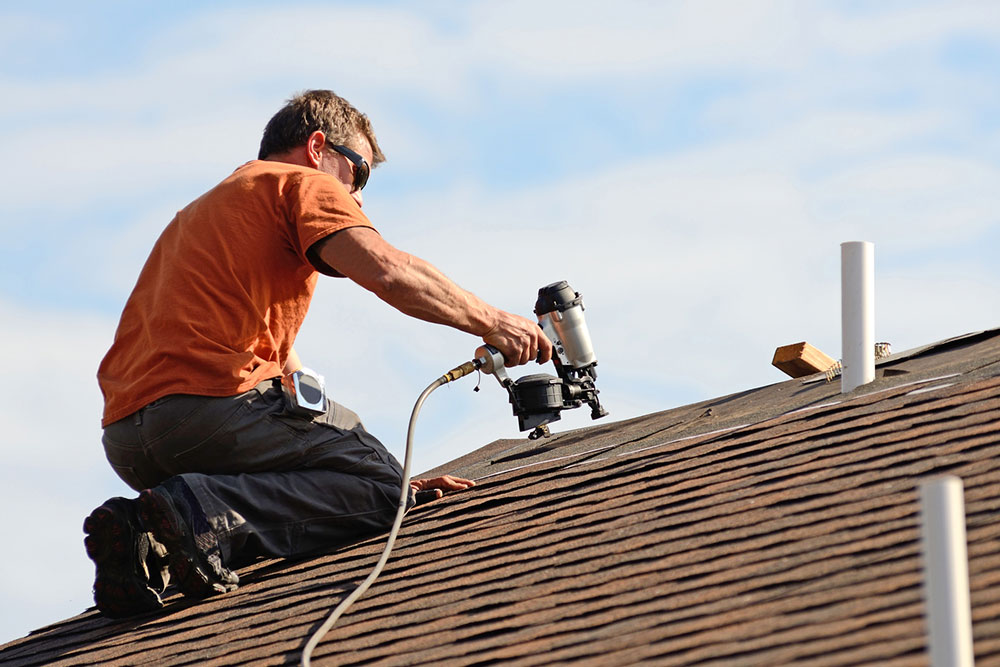7 common roofing mistakes to avoid

Taking on a roofing project can be expensive, which is why it is essential to plan ahead so that one does not end up spending more than expected. For this, it is important to avoid some of the common roofing mistakes that many homeowners make. This way, one can ensure there are minimal hassles and hurdles during the various processes of the roofing project. Here are some of the common roofing mistakes one should avoid.
Not applying for a roofing permit
Permits are required for all renovation and construction projects, including roofing. However, many homeowners fail to consider this requirement and forget to apply for a roofing permit. This usually happens when homeowners decide to undertake the project themselves. Since they are used to contractors applying for permits most of the time, homeowners may forget to apply for one before starting the project. Sometimes, homeowners or contractors want to cut costs and decide to skip the permitting process. However, this can lead to significant problems later, such as heavy fines, removal of the freshly installed roof, and even loss of home insurance coverage.
Not removing the old shingles
When it comes to asphalt roofing, many people make the mistake of applying a new layer over the older one. While some types of roofing can be done over preexisting ones, this does not always work well. This is because applying new shingles over older ones means covering up an issue unknowingly. For instance, there might be holes or cracks underneath the old shingles. When new shingles are overlaid, this problem will persist, rendering the new roofing project futile. Besides this, layering shingles over the old ones will add extra weight, which can cause damage to the overall structure of the roof as well as the house. To avoid this, hire a roofing inspector to examine the roof and check for fragile areas and weak spots.
Not checking the alignment of the shingles
This is a common mistake homeowners make when the roofing work is done hastily. When the shingles are not aligned properly with the rest of the shingles, they can appear misaligned even from the ground level. This not only affects the aesthetics of the roof but also creates functional issues. In addition to looking haphazard and sloppy, the misaligned shingles leave a lot of gaps and cracks, which allows water to seep through and cause leakage. This can also cause damage to the roof deck, and the shingles may even break off or blow off, leading to other issues.
Not factoring in the attic
Homeowners often forget to consider the attic while constructing the roof. They miss out on the fact that the attic provides the foundation for the tiles and shingles on the roof. Therefore, neglecting the attic during the roofing process can lead to significant damage, including a shorter life span of the newly installed roof. The risk increases when the ventilation of the attic is poor. Thus, if the temperature inside the attic rises, the excess heat can damage the alignment of the shingles.
Not matching the colors of the slates
Many homeowners and contractors prefer using slate as a roofing material due to its durability and low maintenance requirements. However, since it is a naturally occurring material, it can be difficult to find matching roof slates while re-doing the roof. Mismatched slate colors can make the roof appear very uneven and spotty. To solve this problem, slate colors can be mixed or installed in a specific order to create a uniform and cohesive look. In cases where damaged slate tiles have to be replaced and the matching slate color is not found, it can be helpful to buy non-fading slates. If using semi-weather and weathering tiles, it is recommended to buy a few extra ones and expose them to the weather and external conditions similar to other tiles fixed on the roof. This will ensure the extra tiles fade or weather at the same rate as the rest of the slates on the roof.
Skipping on the installation of a drip edge
Drip edges are typically made of aluminum and are installed at the edges of the roof to prevent water from seeping into the shingles and tiles, protecting the roof’s structure and the walls of the house. They redirect water to the gutter, ensuring rain, hail storms, and other weather conditions do not damage the roof or weaken the house’s structure. Without a drip edge, the structure of the roof, as well as the house, may become weak and damaged. So, do not skip this step, and install a drip edge to ensure no rain gets under the roof.
Not paying attention to manufacturer guidelines
Roofing may seem like quite a simple process. However, there are a lot of complications involved in the installation requirements. All top roofing manufacturers provide specific instructions on installing and maintaining the products. Whether it is slate roofing, asphalt shingles, metal roofing, or whichever type of roofing a homeowner or contractor selects, it is important to follow those instructions. Ignoring these directions or skipping the steps will lead to potential damage to the materials as well as the entire roof. Additionally, the warranties on the materials may also not be valid. Therefore, make sure to go through and follow all the directions and instructions when installing a new roof.





